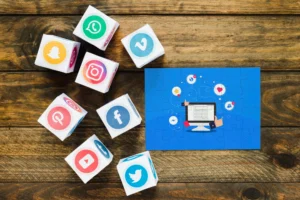The advent of advanced AI technology has sparked debates about its impact on the job market. ChatGPT, an AI marvel, disrupts job sectors and creates opportunities for improved productivity. In this blog, we’ll explore ChatGPT’s dual role: taking away jobs while providing valuable assistance in various domains.
Job Disruption: Automating Routine Tasks
ChatGPT can generate human-like responses, potentially automating repetitive and mundane tasks that human workers previously carried out. This automation can lead to inevitable job disruptions, primarily in areas such as:
Customer Support: ChatGPT’s natural language processing capabilities enable it to handle basic customer queries and provide instant support. This lessens the need for a large customer support team, impacting job opportunities in this field.
Data Entry and Processing: ChatGPT’s ability to interpret and generate text makes it a valuable tool for automating data entry and processing tasks. As a result, jobs involving manual data entry may decline.
Content Generation: ChatGPT’s language generation prowess raises concerns about its impact on content writing and journalism. Automated content creation poses a potential threat to job opportunities in these fields.
Enhanced Productivity: Collaboration and Support
Despite job disruption concerns, ChatGPT significantly enhances productivity and efficiency in various industries.
ChatGPT and human content writers have unique strengths and limitations, making it inaccurate to definitively say one is better. Here are some points to consider:
Creativity and Originality: Human content writers often excel in generating original ideas and creative concepts. They can bring a unique perspective and inject personality into their writing, which can be valuable for certain types of content that require a human touch.
Understanding Nuances and Context: While ChatGPT is a powerful language model, it may struggle with understanding subtle nuances, context, or cultural references in the same way a human writer can. A human writer has real-world experiences and contextual understanding that can enhance the quality and relevance of their content.
Domain Expertise: Content writers who specialize in specific industries or topics can bring deep domain expertise to their work. They have subject matter knowledge, research skills, and the ability to synthesize complex information, which can result in high-quality, accurate content tailored to a specific audience.
Efficiency and Scalability: ChatGPT, on the other hand, can generate content at a much faster pace compared to a human writer. It can also handle a large volume of requests simultaneously, making it more scalable for certain content generation tasks.
Consistency and Reliability: ChatGPT provides consistent output based on its training data, while human writers may have variations in style, quality, and reliability. ChatGPT can adhere to predefined guidelines consistently, ensuring a predictable outcome.
Cost and Accessibility: Employing a human content writer can be more expensive than using an AI language model. ChatGPT offers a cost-effective solution for businesses or individuals who need content on a regular basis but have budget constraints.
It’s worth noting that ChatGPT is a machine learning model that continuously learns and improves over time. While it has limitations compared to human writers, it can still generate valuable content, assist with drafting, or provide inspiration for human writers. Ultimately, the choice between ChatGPT and a human writer depends on the specific requirements, resources, and desired outcomes of a given project.
ChatGPT is in a way not taking the jobs away but is helping them to create precise work. Its assistance can not be ignored and if used in a good way can create better opportunities.
Collaborative Assistance: ChatGPT can be a virtual assistant, supporting professionals across different domains. It assists with information retrieval, data analysis, and generating ideas, allowing workers to focus on more complex and strategic tasks. This collaboration between humans and AI can lead to higher productivity and improved decision-making.
Language Translation and Localization: With its language understanding capabilities, ChatGPT aids in translation and localization tasks. This helps businesses reach global audiences more effectively, increasing international collaboration and expansion opportunities.
Content Editing and Proofreading: ChatGPT can assist writers and editors by offering suggestions, identifying grammatical errors, and enhancing written content quality. This collaboration helps streamline editing, enabling content creators to produce refined work more efficiently.
Personalized Recommendations: ChatGPT’s ability to analyze user data and preferences enables it to provide personalized recommendations to customers. This enhances user experiences, drives engagement, and increases sales for businesses.
ChatGPT’s emergence has undoubtedly triggered concerns about job displacement in specific sectors. However, it’s essential to view this technological advancement as a tool that can both disrupt and assist. While some routine tasks may be automated, ChatGPT enhances productivity and collaboration, opening up new possibilities for workers across industries. Businesses must strike a balance between using AI for efficiency gains and ensuring a smooth transition for those affected by job changes. By embracing ChatGPT’s potential and adapting to the changing work landscape, we can drive innovation and create a more productive future.




